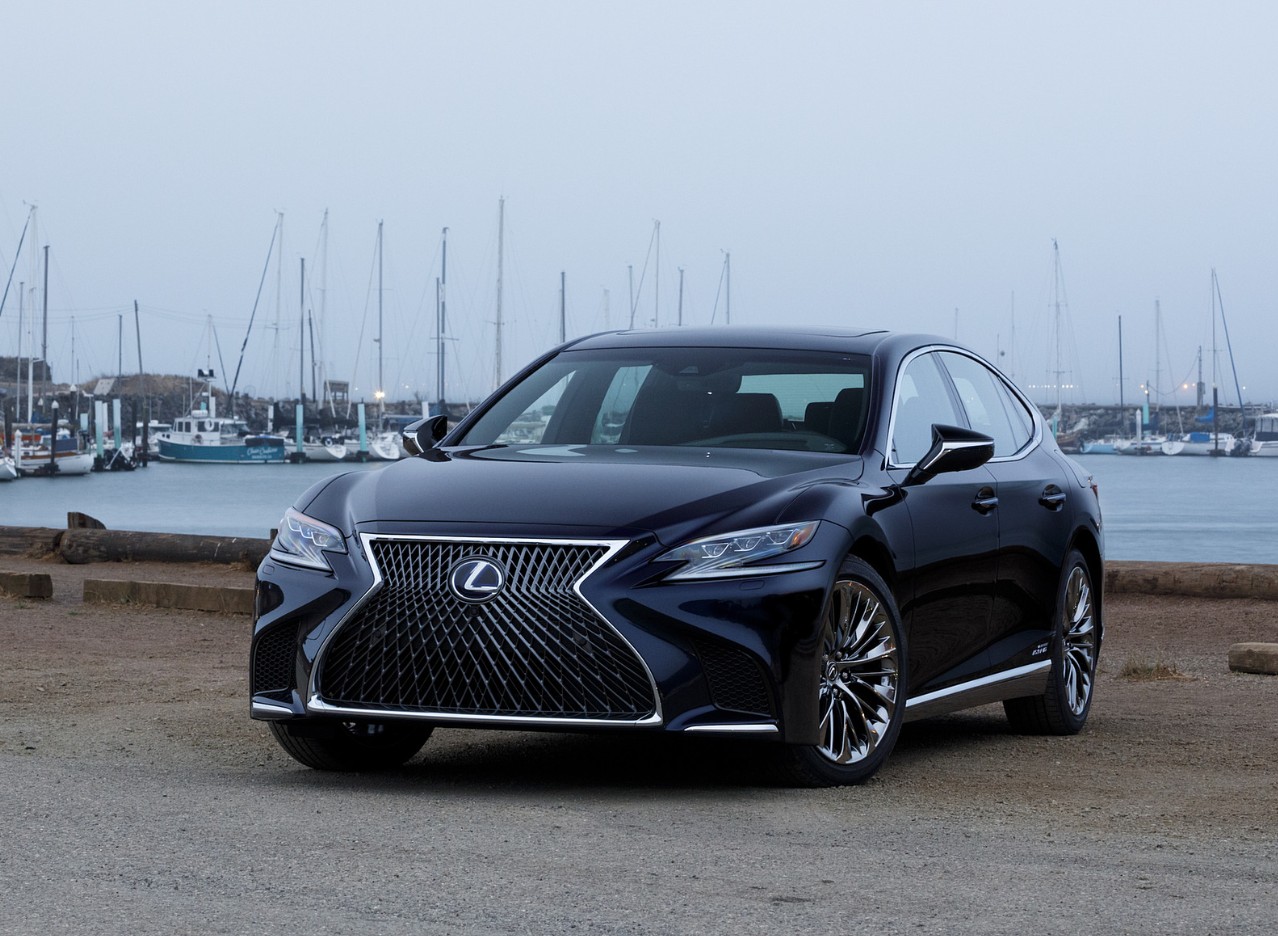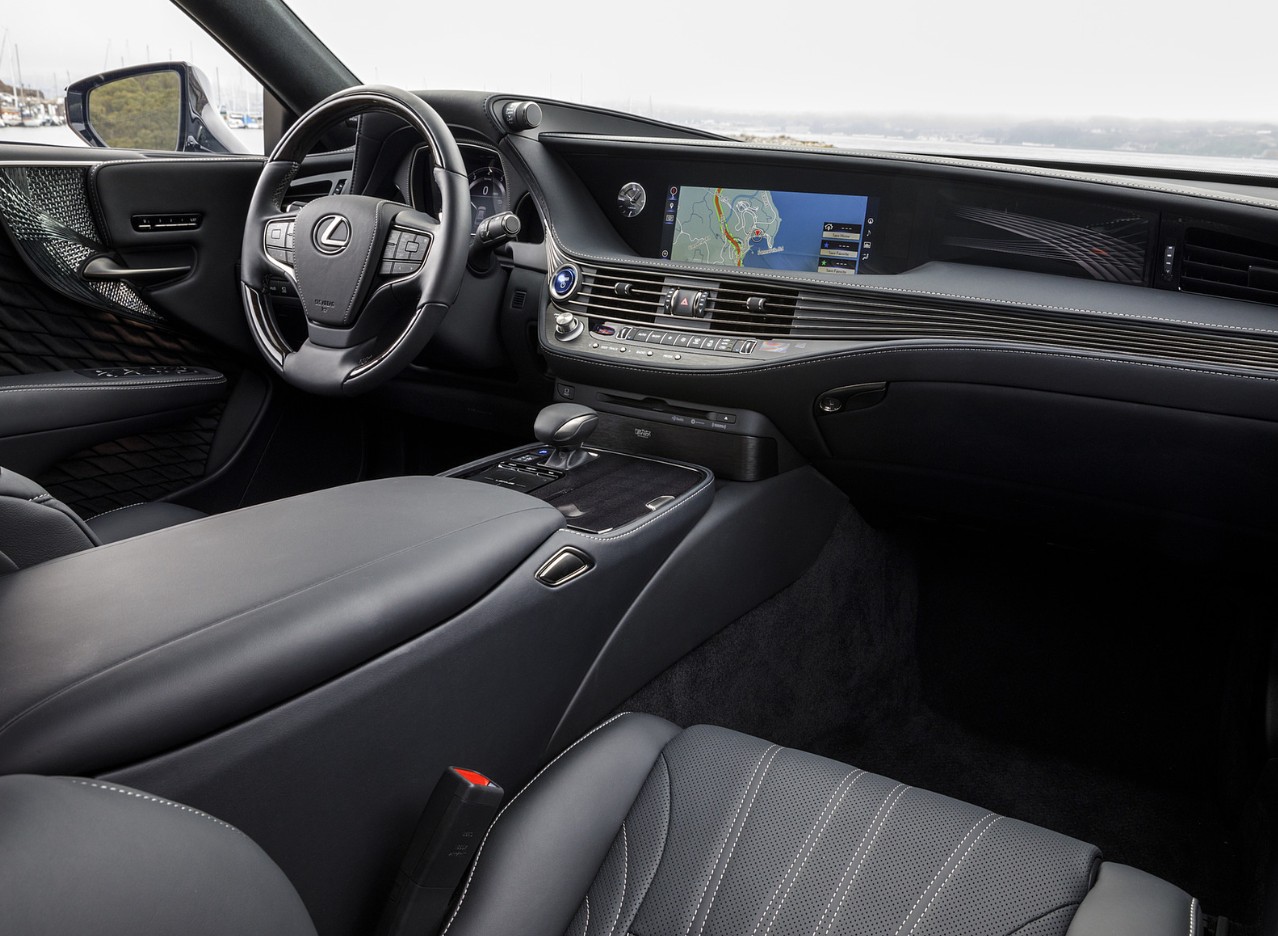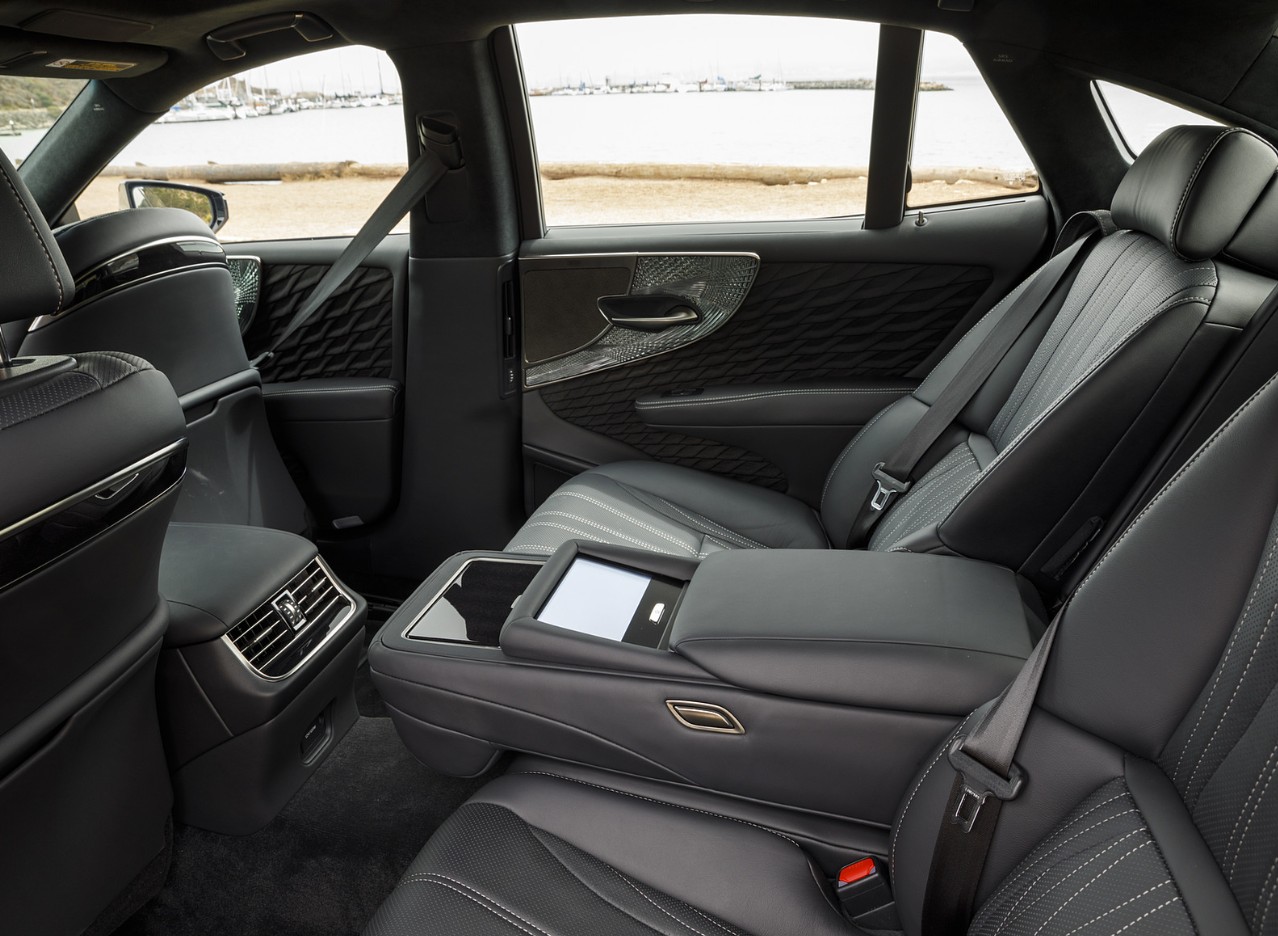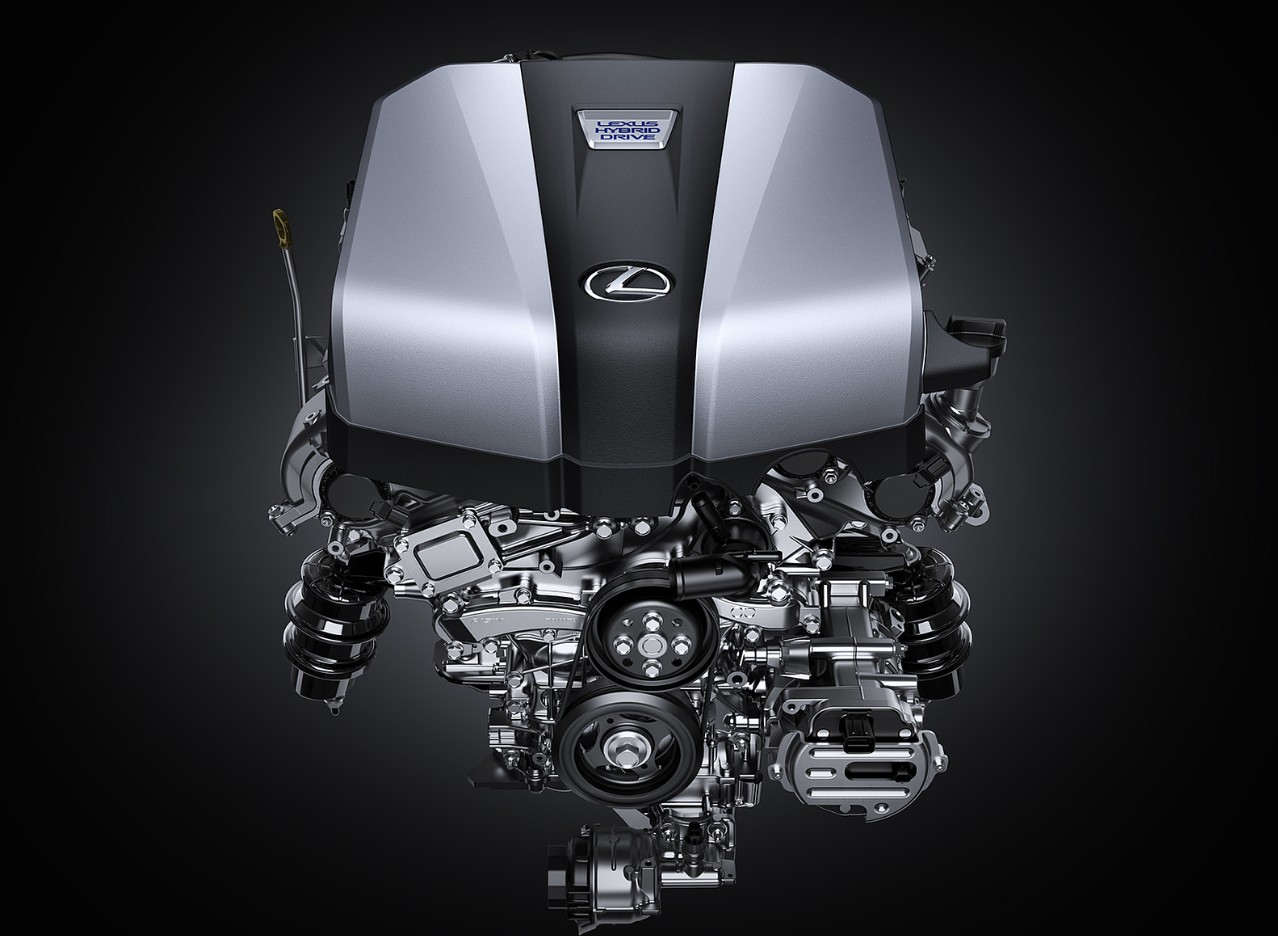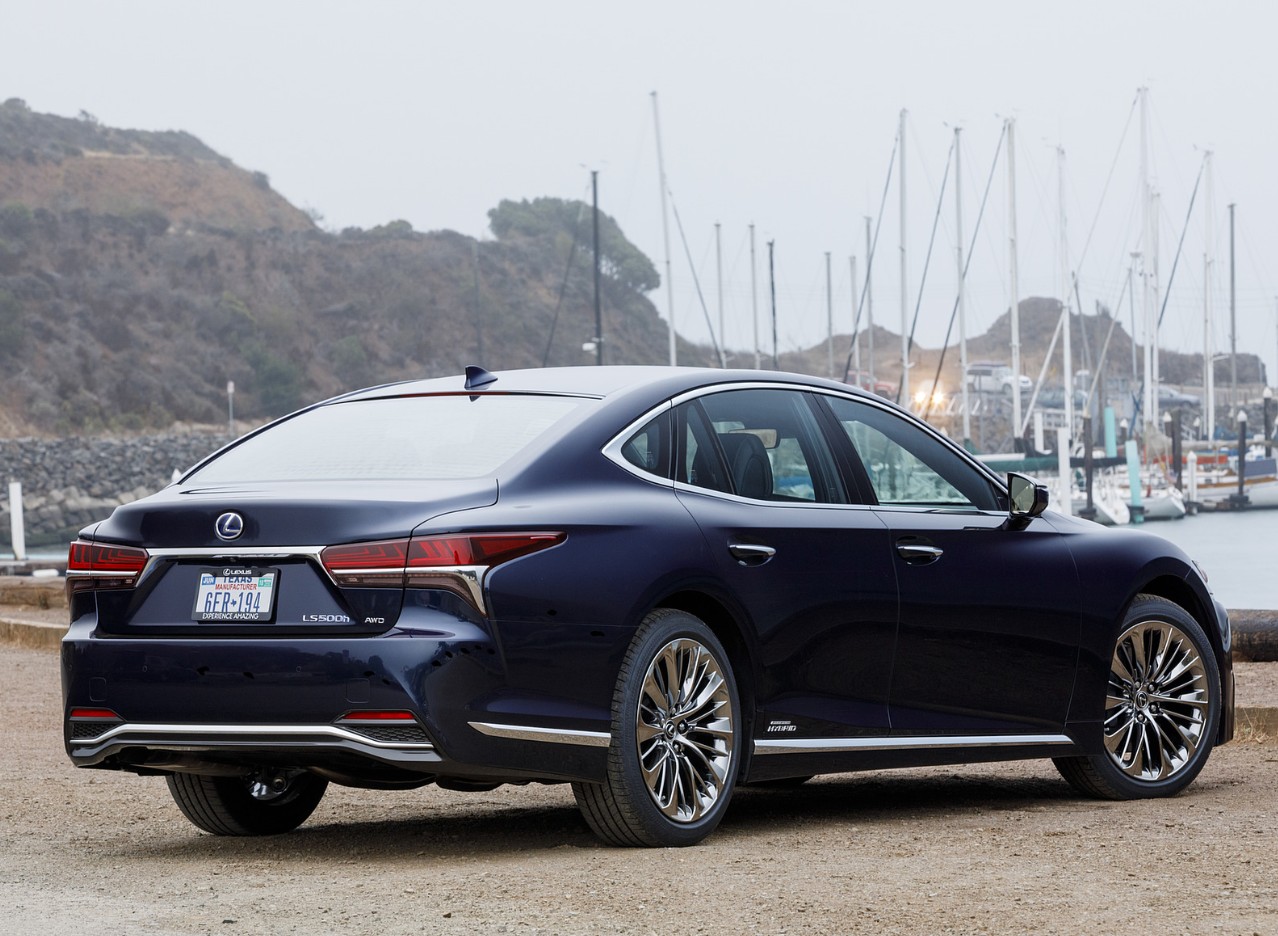2027 Lexus LS 500h Review, Specs, Features – In order to bridge the gap between historical prestige and future electrified orientation, Lexus looks to be planning one of its most ambitious revisions in years with the 2027 LS 500h. The company may change its focus to highlight hybrid and potentially electric transformations while keeping the LS nameplate, especially since the 2026 LS 500 Heritage Edition was announced as a “final year tribute.”
We anticipate that Lexus will redesign the current GA-L (or variation) platform, adding modular electrification readiness (e.g. extra space for battery packs, wiring, thermal systems), optimizing crash zones, and strengthening structural stiffness. Redesigning suspension mounting locations to allow both smooth, comfortable cruising and sharper dynamic capability is likely part of the redesign plan, which also aims to reduce weight by using aluminum or composite materials in body panels and chassis bracing. 2027 Lexus LS 500h Review
2027 Lexus LS 500h Redesign and Update Plan
Exterior & Interior
Lexus is probably going to update the exterior design without offending long-time customers. Sharper triple-beam or matrix LED headlights with thin L-signature daytime running elements integrated on either side might replace the spindle grille on the front fascia, which would otherwise be a thinner, more attractive design. The taillights might change to a segmented pixel-style appearance or a continuous light bar. Aerodynamic 20–21′′ wheel alternatives with flush or semi-flush rims to reduce turbulence may be housed in wheel arches, while sculpted side surfaces will tend toward clearer character lines and less apparent strain. Active aerodynamic features that balance drag and cooling demands include fender vents, grille shutters, and rear diffusers with adjustable geometry.
The 2027 LS 500h’s interior will strive to be a haven of serene, contemporary elegance. Anticipate a broad, curving panoramic display that combines a center info panel with a digital instrument cluster (perhaps 14–16 inches in total span). For climate, seating, and comfort functions, physical controls will be reduced and replaced with capacitive surfaces or haptic toggle panels. Premium recycled leathers, ultra-fine weaves, multilayer woods, and possible custom color/trim packages will be the main materials used.
Executive-class options for rear seating could include fold-out tables, footrests, massage, climate zones, and motorized recline. There may be ambient lighting systems with multi-tonal zones, texture-mapped surfaces, and even “mood projection” capabilities. In-cabin sensors, app-based control, and 5G/6G connectivity enhancements will improve personalization and smooth integration with users’ digital life.
With thinner seat backs, a lower tunnel, and increased legroom, interior space efficiency should increase. Cabin tranquility will be ensured by sophisticated sealing, active noise cancellation, and acoustic insulating materials. To keep the LS up to date during its career, Lexus may potentially incorporate modular infotainment hardware and over-the-air update capability.
With its sharper lighting elements, softer spindle grille geometry, less cluttered sculpting, and subtle aerodynamic changes (active grille shutters, flatter underbody panels, enhanced airflow around wheels), the update will externally embrace a more refined version of Lexus’s developing design language. The most significant redesign will take place inside, with new curved screens, more use of premium, sustainable materials, more customizable ambient lighting, redesigned control layouts (less reliance on touchpads), and possibly a switch to a more user-friendly voice/haptic hybrid interface.
Additionally, Lexus may introduce regionally unique versions of the 2027 LS 500h, tailored for areas that value performance (North America, the Middle East) over low emissions (Europe, Japan). The LS brand can progressively change over a number of years from a solely internal combustion offering to a flagship hybrid or electric sedan—one that embraces the tectonic transition toward electrification while retaining the ambiance of a grand sedan.
With production beginning in mid-to-late 2027 and deliveries extending into early 2028, we predict that Lexus will unveil the 2027 LS 500h (or its concept preview) in late 2026. 2027 Lexus LS 500h Review
2027 Lexus LS 500h Specs
Engine & Performance
The suffix “500h” indicates that a hybrid drivetrain will be emphasized in the 2027 LS. With a more potent electric motor construction, a larger battery pack (perhaps 20–25 kWh usable), and improved e-drive modes for pure-electric cruising, Lexus is anticipated to advance its present hybrid system, which was derived from LS 500h architectures. With Atkinson or Miller cycle tuning, the internal combustion engine is probably a V6 or inline-six (2.5 to 3.5 L range) that is turbocharged or at least heavily boosted. In order to compete with contemporary performance sedans, the combined system output may approach 450–500 horsepower (depending on hybrid boost) and torque enhanced by electric help.
The 10-speed automatic transmission will probably give way to a more hybrid-optimized transaxle (such as an e-CVT hybrid with gear-split or multi-speed behavior). A plug-in hybrid version (LS 500h PHEV) that can provide 50–70 km (or more) of pure EV range might also be taken into consideration by Lexus. An all-wheel-drive hybrid system with an e-motor on the rear axle is feasible for premium markets, providing advantages in terms of efficiency and traction.
Comfort-tuned trims will prioritize smoothness, minimal noise, and controlled acceleration, while performance statistics may aim for 0–60 mph in the mid 4-second range (4.2–4.8 seconds) for the sportier model. Driving modes with adaptive damping and predictive powertrain mapping could include Eco, Comfort, Normal, Sport, Sport+, and EV-only.
Improved energy recovery (regen) techniques, a more compact and effective battery thermal management system, and perhaps solid-state or high-density battery cells that are closer to adoption will all be used in the hybrid system architecture. Lexus will adjust the system to optimize fuel efficiency while maintaining the LS’s renowned “floating” ride quality.
2027 Lexus LS 500h Fuel Economy
Compared to existing non-hybrid LS vehicles, the hybrid system could result in combined consumption improvements of 15% to 25% in terms of fuel economy and efficiency. Depending on the market, the LS 500h may, for instance, get 35–45 mpg equivalent (or 6–7 L/100 km) in hybrid mode under ideal circumstances. For brief city excursions, it may use no fuel while operating solely on electricity (for plug-in models). To squeeze even more advantages, Lexus will probably also tweak its engine shutdown, rolling resistance, and drag tactics. Although driving habits and hybrid usage will affect actual fuel efficiency, buyers should anticipate class-leading figures in the full-size luxury car market.
2027 Lexus LS 500h Safety Features
The most recent iteration of the Lexus Safety System+, maybe version 4.0 or higher, will be installed in the 2027 LS 500h. Anticipate improvements like better sensor fusion (radar, lidar, and camera), sophisticated predictive lane change assistance, reduction of intersection collisions, recognition of cyclists, motorcyclists, and pedestrians, and proactive collision avoidance steering. Steering assistance may be integrated with blind-spot and cross-traffic systems to help prevent side crashes. In complicated situations, hands-off parking is probably possible with an upgraded Advanced Park or automated valet system. In addition to perhaps passenger alert systems, a driver-attention monitoring system (infrared cabin camera) will be standard.
A reinforced passenger cage, increased usage of ultra-high strength steel and aluminum for deformation zones, and larger side-impact curtain airbags, rear knee airbags, and center front airbags to prevent side crashes would all improve occupant safety. Support for evasive steering or emergency braking may be integrated into frontal impact sensors.
2027 Lexus LS 500h Release Date & Price
Because of its high-end design and cutting-edge hybrid technology, the 2027 LS 500h will fetch a higher price. A base hybrid LS may start from $120,000 to $140,000 in the US market (adjusted for electrification content, tech premium, and inflation). Variants that are more performance-focused or opulent (such as AWD, Executive, and F SPORT) may cost more than $160,000. The LS 500h may become a flagship halo product rather than a volume seller in other areas (Europe, Asia) if prices reflect import, tax, and regulatory costs.
Pre-orders will likely commence shortly after Lexus’s official 2027 LS 500h is unveiled in Q4 of 2026, possibly at major auto events in Tokyo, Los Angeles, or Geneva. First deliveries would occur in late 2027 or early 2028, with production ramping up in early to mid-2027. In order to preserve exclusivity, Lexus can restrict initial volumes.
Lexus must strike a balance in its posture by accepting changing market trends, such as the global decline in sedan sales in favor of SUVs and EVs and the push for electrification due to regulatory restrictions, while also preserving the heritage and brand reputation of the LS series.
The LS 500h should be positioned as a forward-thinking flagship that connects Lexus’s past and future, rather than just as a premium car that transitions from fossil fuels to electricity. Electric or hybrid versions of the Mercedes-Benz S-Class, BMW 7 series, Audi A8 e-hybrid, and Genesis G90 hybrid (if available) could be its main rivals. The hybrid powertrain may provide Lexus a sustainability edge while keeping the finesse and brand ethos that LS buyers expect.
An effective marketing campaign should highlight the following: a comfortable ride, performance that combines environmental responsibility, current technology, and custom luxury. To create exclusivity around early production, Lexus might also employ region-specific touches, custom customisation, and limited-edition special editions. 2027 Lexus LS 500h Review
Conclusion
With one foot firmly set in the heritage of ultra-luxury cars and the other firmly stepping into electrified, sustainable transportation, the 2027 Lexus LS 500h has the potential to be a sea change in the company’s flagship lineup. In a time of change, the new LS 500h could regain flagship status with its sophisticated appearance and interior overhaul, cutting-edge hybrid drivetrain, extensive safety features, and tactical market positioning. Its success will depend on Lexus’s capacity to satisfy traditional customers that this hybrid future is still deserving of the LS moniker while also delivering enhanced luxury and competitive efficiency.
Note: This article post’s information is based on pre-release content that was available at the time it was published. You should contact your local dealership or consult official sources for the most recent information.



